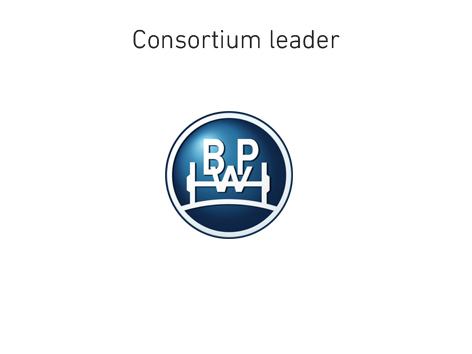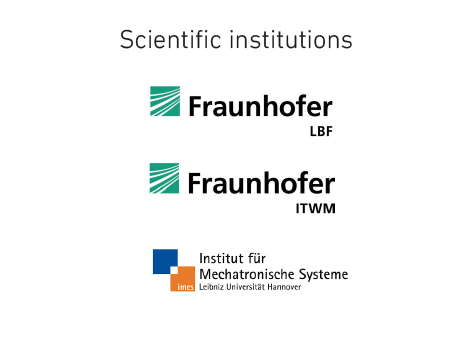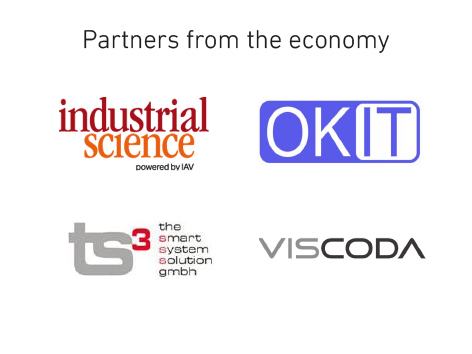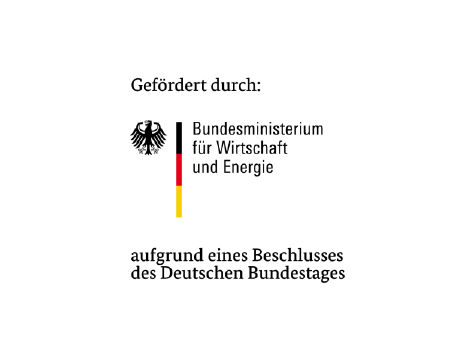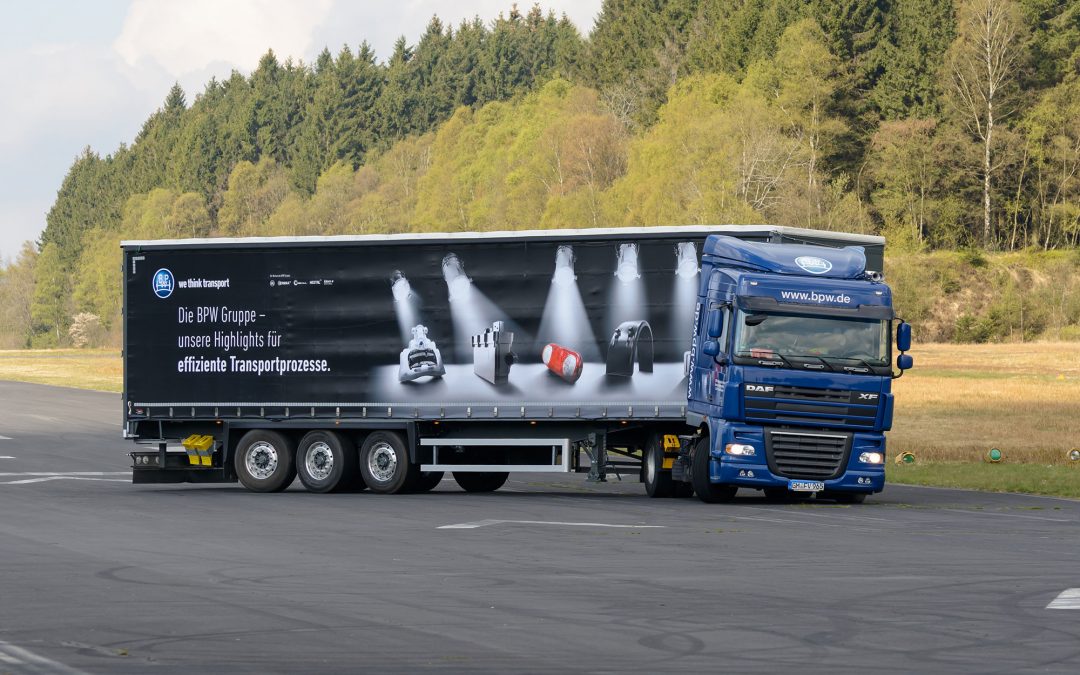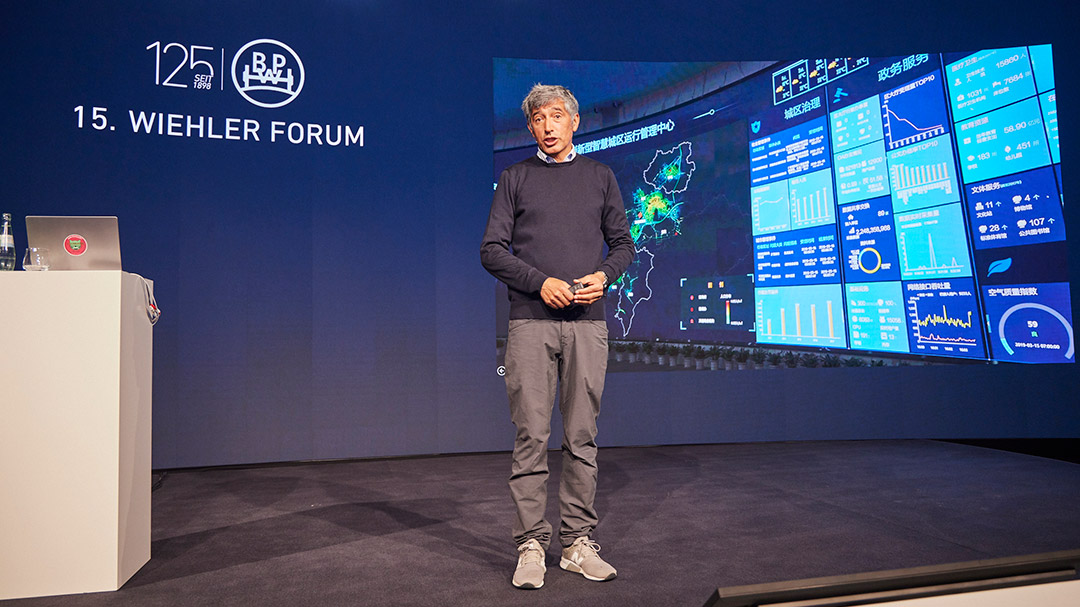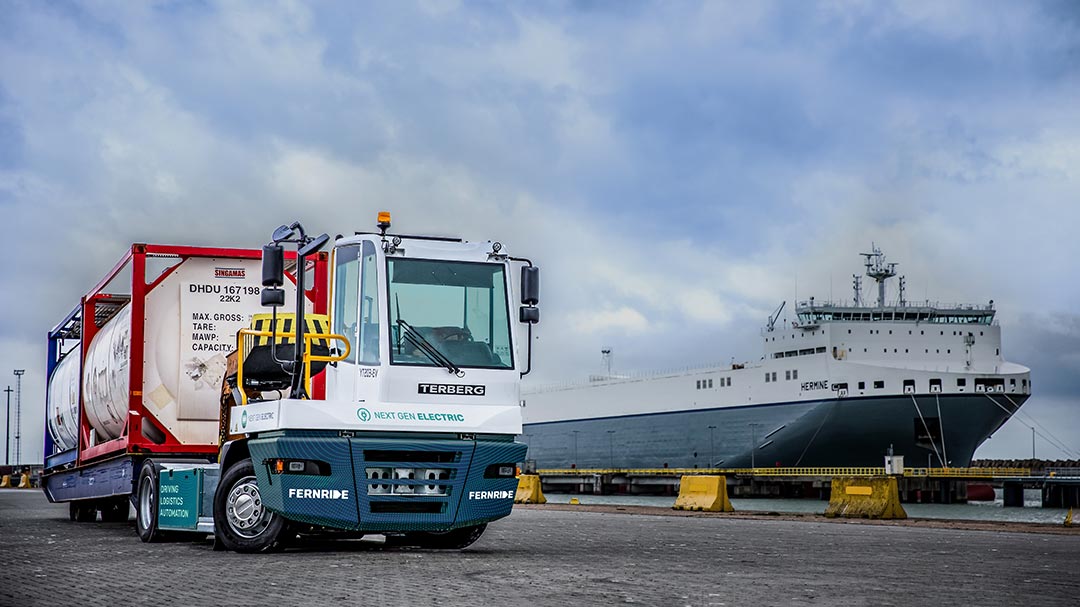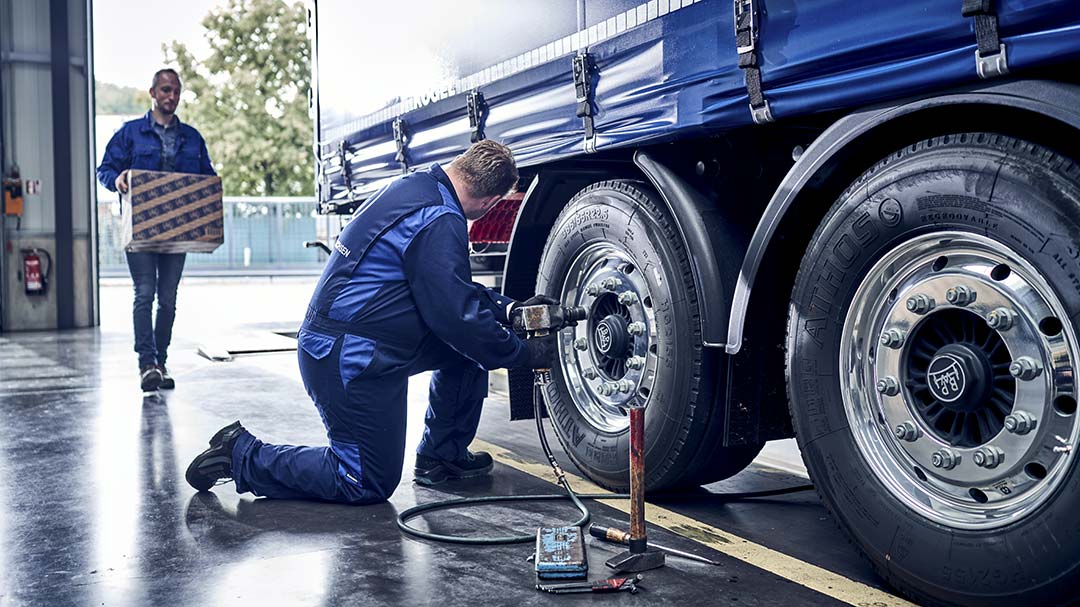Text: Petra Wurm
Photos: BPW
Trucks with a total weight of 40 tons are part of the normal road scene. But without a driver? Especially in the commercial vehicle sector, autonomous driving offers enormous potential, but also special risks. Although trailers have a strong influence on the driving dynamics and reliability of semitrailers, they have so far received little attention when it comes to autonomous driving. The “IdenT” research project is changing this.
Promote autonomous driving
»Of course, we always ask ourselves the question: What must our products achieve when there is no driver in the cab?«
Dr Jan-Philipp Kobler
Intelligent trailer sensor technology is needed to maximise safety and efficiency when driving autonomously. The aim of the project is therefore to set up and test an IdenT system: By allowing the trailer to determine and provide reliable information, the project team wants to support autonomous driving of the tractor unit. In concrete terms, the project will focus on information from four areas:
• on factors relevant to vehicle dynamics (weight and load distribution, axle loads etc.)
• on the states and remaining lifetimes of function and safety-relevant components
• from the rear area monitoring
• on the condition of the road
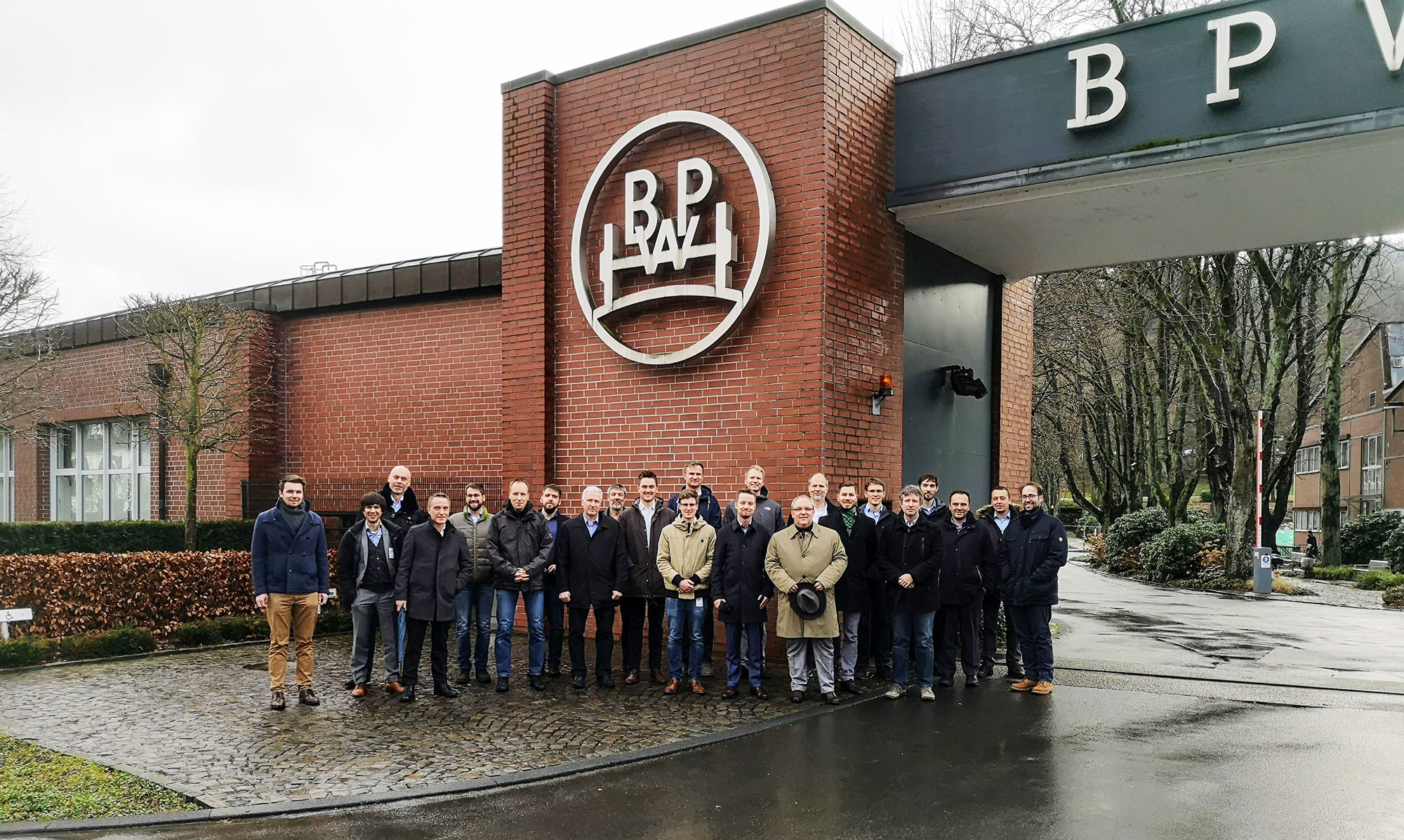
The second point is aimed at predictive maintenance. Today the driver checks the condition of the trailer, in future the trailer itself will have to do this – an important basic requirement without which the autonomous driving of articulated trucks will not be possible. Damage to tyres, brakes, chassis, lighting, body and load must be detected reliably and in good time in order to avoid unplanned breakdowns and endangering other road users. Ideally, the trailer should be able to provide information about wearing parts and all function and safety-relevant components. This would make it possible to optimally plan workshop stops and thus minimise downtime and associated costs. One example is the BPW BrakePadMonitor – a sensor that measures wear on the brake pad and reports to the vehicle operator via a telematics link as soon as a threshold value is exceeded.
Further objectives of the project are rear area monitoring, which is essential for safe autonomous lane changes during overtaking manoeuvres, for example, and the determination and provision of information on road conditions, which significantly determines the load on the chassis components.
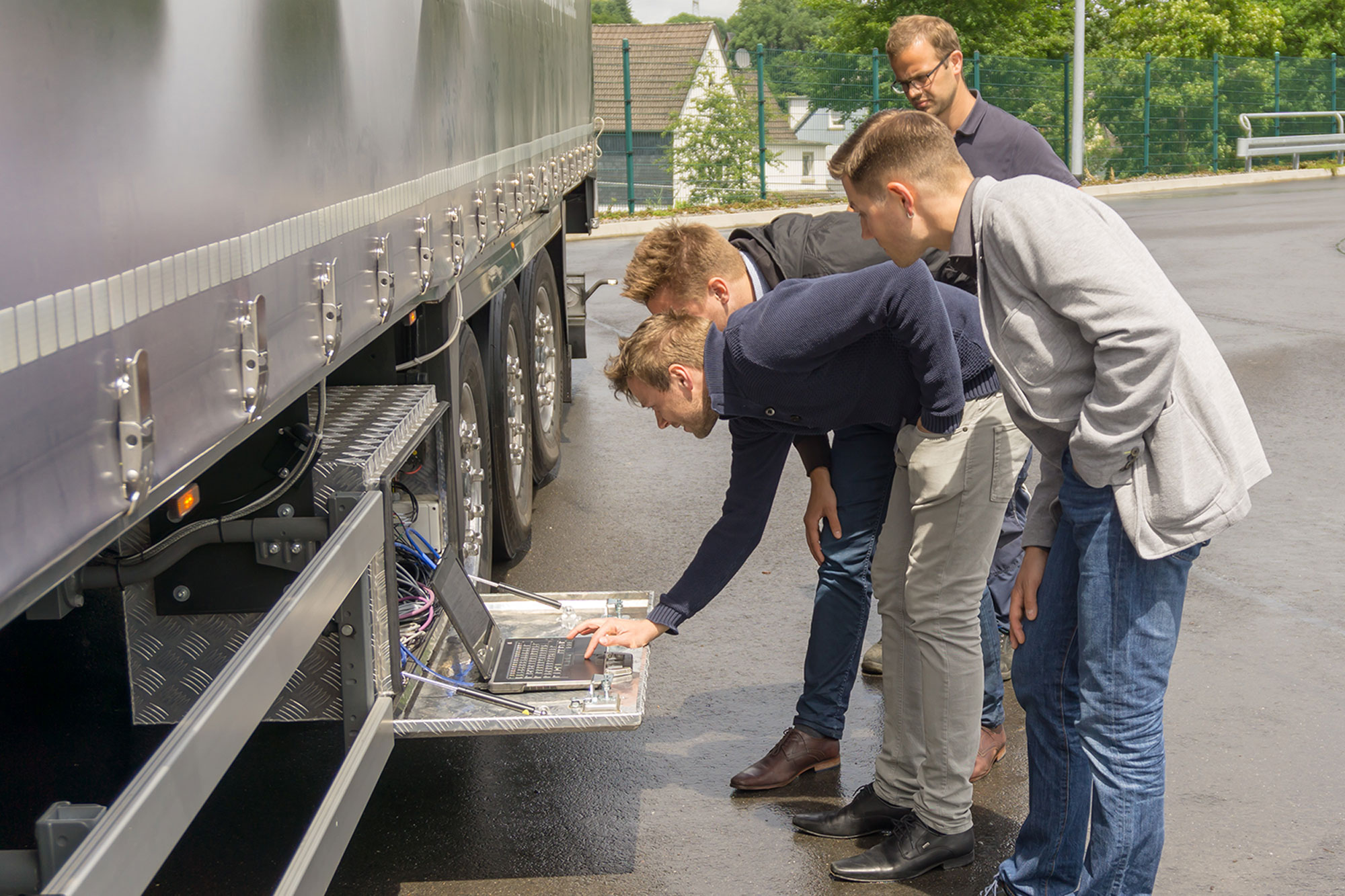
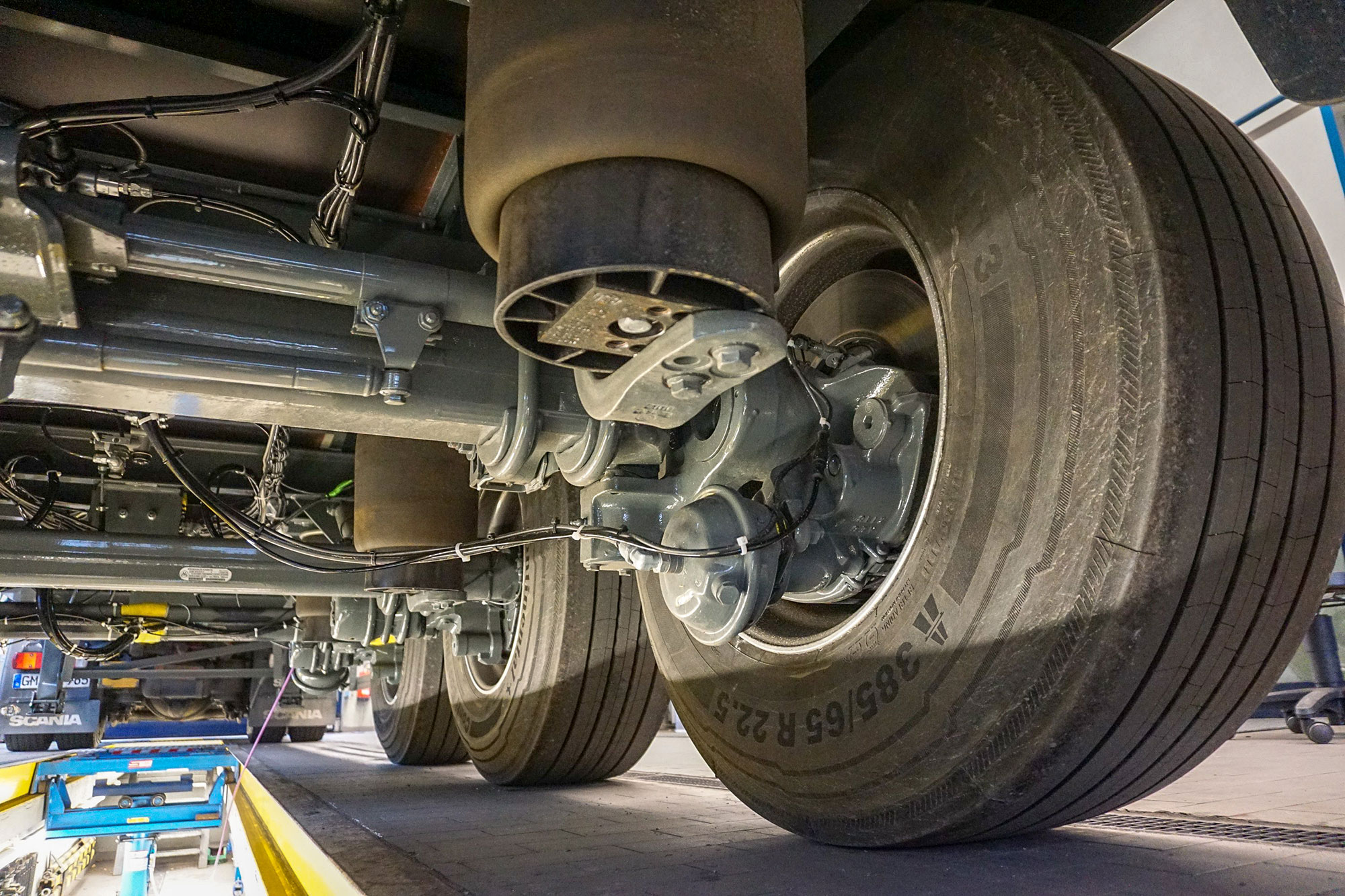
A project with clear practical relevance
From science fiction to reality
Composition of the project consortium
